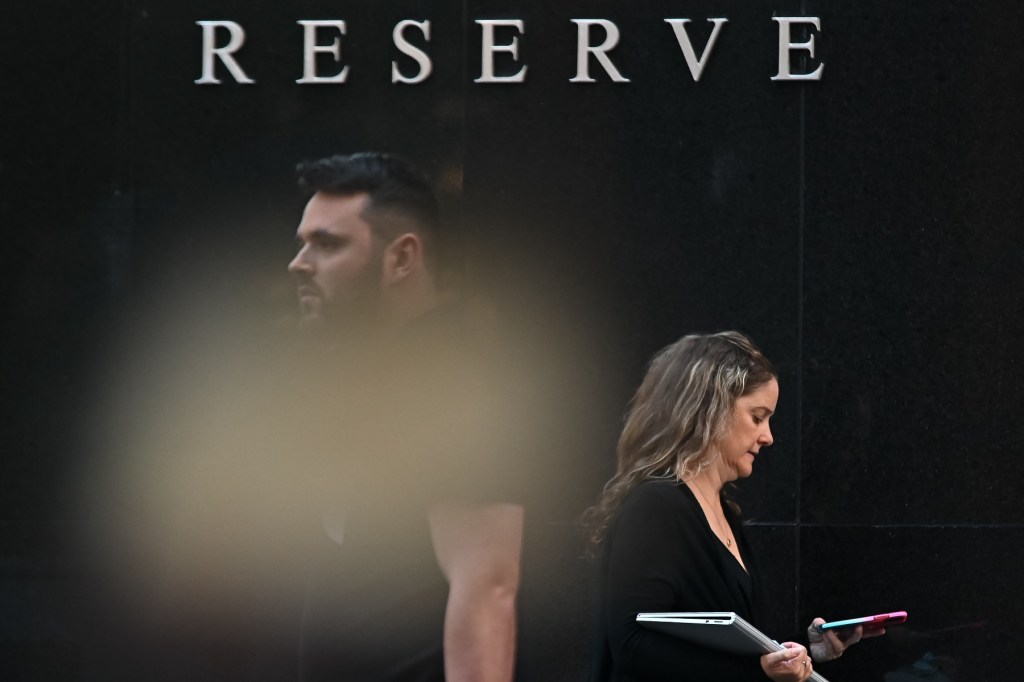Why the RBA should hold off on rate hikes

- by Admin
- July 29, 2024
There’s a curious thing about openness, communication and transparency. The more people talk, the less we seem to know.
Take central banks. In the past decade, they’ve been forced to explain how and why they make decisions and even throw some light on how they view our economic future, so we can all understand exactly where they’re taking us.
But amid all the noise emanating from central banks around the globe, have you noticed they’ve become expert at avoiding saying anything much at all?
That’s because too much information can have the entirely opposite effect to what you’re trying to achieve.
Earlier this year, US Federal Reserve boss Jerome Powell was letting out some optimistic hints about multiple rate cuts for 2024.
Unfortunately, everyone took notice and behaved accordingly, helping push inflation higher. Now, even though the Fed is likely to cut in September, he’s being far more circumspect.
Michele Bullock is facing the exact same problem. When the inflation numbers drop at 11:30am on Wednesday, she’ll be praying they are, at worst, benign.
Because, despite recently showing a real reluctance to want to push interest rates even higher, she and her Reserve Bank of Australia colleagues have for the past two years made it abundantly clear that they were committed to hammering inflation into submission.
And therein lies the problem.
Even if the RBA board thinks it’s unwise to hike again, it may not be able to ignore another inflationary breakout. Doing so would risk undermining its credibility, sending a message that it was unwilling to act on its own threats.
In the era of openness and transparency, it’s called talking yourself into a corner.
Why the long face?
Just three months ago, it looked as though the RBA had won. March quarter inflation came in at just 3.6 per cent, way below the December 2022 quarter peak of 7.8 per cent.
But in the past few months, we’ve seen it kick back up. The June quarter is likely to come in at anywhere between 3.9 per cent and 4.1 per cent year-on-year. That’s a significant lift from the previous quarter and higher than it has previously forecast.
Money markets right now have just a one-in-five chance that the RBA will hike at its next meeting but if the trimmed mean inflation — a price movement reading with some volatile elements stripped out — comes in at 1.1 per cent or more for the quarter, it will come under real pressure to push through another rate increase.
But if it succumbs to the pressure, the RBA could be entering some murky waters.
Inflation was slow to take off in Australia and now appears to be slow in following other developed countries lower. Plus, our recent uptick follows the same trend that occurred in the US earlier this year.
Our inflation problem has shifted from goods to services that don’t respond to rate hikes — such as rent, insurance, education and health — so hiking rates for the 14th time won’t do much more than the first 13.
While these are essential services, not the kind of things you can cut back on, the theory goes that the more you spend on them, the less you have available to spend elsewhere.
That might be true if everyone was in the same boat.
But the pain isn’t being evenly distributed. It is being meted out to a particular cohort — young and heavily indebted new entrants into the housing market and renters, many of whom now are in dire straits.
A large number of economists, however, seem unconcerned about that particular injustice possibly because they are older, established and relatively unaffected by the recent rate hikes.
What could sway the RBA?
Where do we start? Here’s a short list of potential problems that could really hammer the Australian economy in the next little while.
Global growth is slowing. As a result, central banks across the developed world are looking forward, focusing more on avoiding recession than choking off inflation.
Canada cut rates again last week, concerned about its slowing economy and rising unemployment, with the European Central Bank, the Bank of England, the US Federal Reserve and the Reserve Bank of New Zealand all eying cuts.
While we don’t necessarily have to follow the herd, there are other quite unique factors that Bullock and her board will need to consider.
The most important is that our biggest trading partner is facing serious economic problems that it seems unwilling to address.
China’s economy is not merely in the grip of a cyclical slowdown, it is reeling from a rout in its property sector that threatens to wreak havoc on its economy and flow through to its banking sector and the broader economy.
New construction has dropped to perilously low levels after four years of declines. That means less demand for our exports. Commodity prices already have begun to head south, which will impact our national income.
Here at home, immigration and population growth are moderating, which may help stabilise rents and property prices. And our unemployment, while still historically low, is now rising and well above its post-pandemic low.
Then there are the rumbles running through investment markets.
As we witnessed last week, the sudden lurch from Wall Street investors, spooked by another disappointing result from Elon Musk’s electric vehicle outfit Tesla, demonstrates just how nervous money managers have become.
For the past 18 months, a handful of giant tech companies have commandeered global equity markets as they splurge huge amounts of cash chasing a future based on Artificial Intelligence.
Investors, however, now want results. If they’re not forthcoming, a correction on stock markets is just one more factor that could add instability to the global economy.
All talk, maybe some action. Maybe not
Once upon a time, not that long ago, central bankers kept shtum.
They never gave speeches, let alone rocked up to press conferences, and for many years didn’t even deliver a statement after their decisions on rate movements.
The only way many people knew the name of the governor was that he (and it was always a he) signed the banknotes we used.
Despite that complete silence, the RBA was considered one of the best-performing central banks in the world. It didn’t jump at shadows, it took decisive action when needed and it kept the Australian economy on an even keel through some incredibly tough periods.
All behind closed doors.
Loading
Little by little, central bankers here and elsewhere discovered they could influence spending patterns and economic activity not just with interest rate movements but merely by threatening to lift or lower rates.
It was Phil Lowe who spearheaded a more open and accessible RBA. But what brought him undone was a little too much talking, with his efforts to muscle rates down three years into the future.
We’ve now come full circle with the spectacle of hour-long press conferences and waring economists battling it out for supremacy in forecasting what the RBA will or won’t do.
That’s forced central bank bosses to become almost as glib as politicians in the art of using a great deal of vocabulary to say absolutely nothing.
It’s extremely entertaining. But the greater transparency, the more opaque it all seems to have become.
Loading…
The Latest News
-
December 25, 2024Our favorite golf memories from 2024 – Australian Golf Digest
-
December 25, 2024Where to watch Australia vs. India 4th Test: Free live stream, free-to-air channel, start time for cricket match | Sporting News Australia
-
December 25, 2024Gearing Up for Australian Open, Nick Kyrgios Elevated in Bold Predictions From Renowned Tennis Experts
-
December 25, 2024Dads’ day out! Australian stars unwind with with wives, kids at MCG. Watch | Cricket News – Times of India
-
December 25, 2024Border-Gavaskar Trophy: What is Australia’s record in Melbourne in Test matches? | Sporting News Australia



